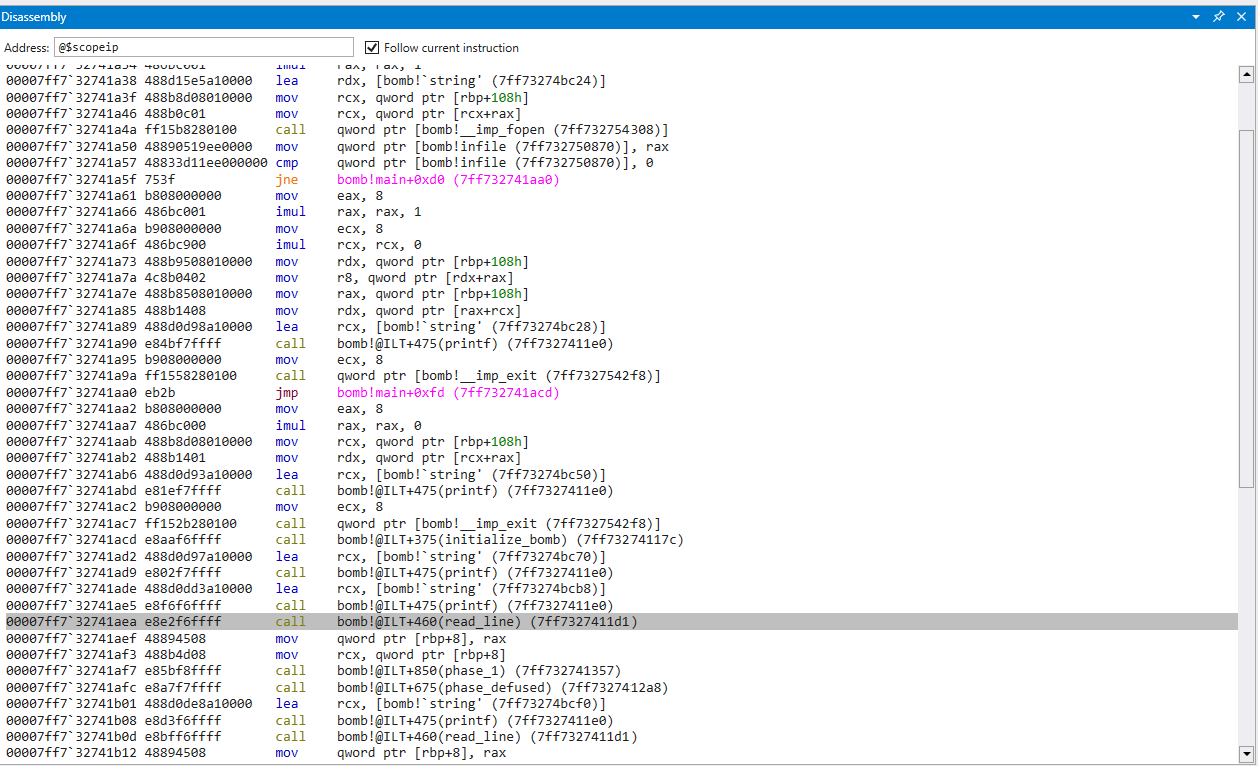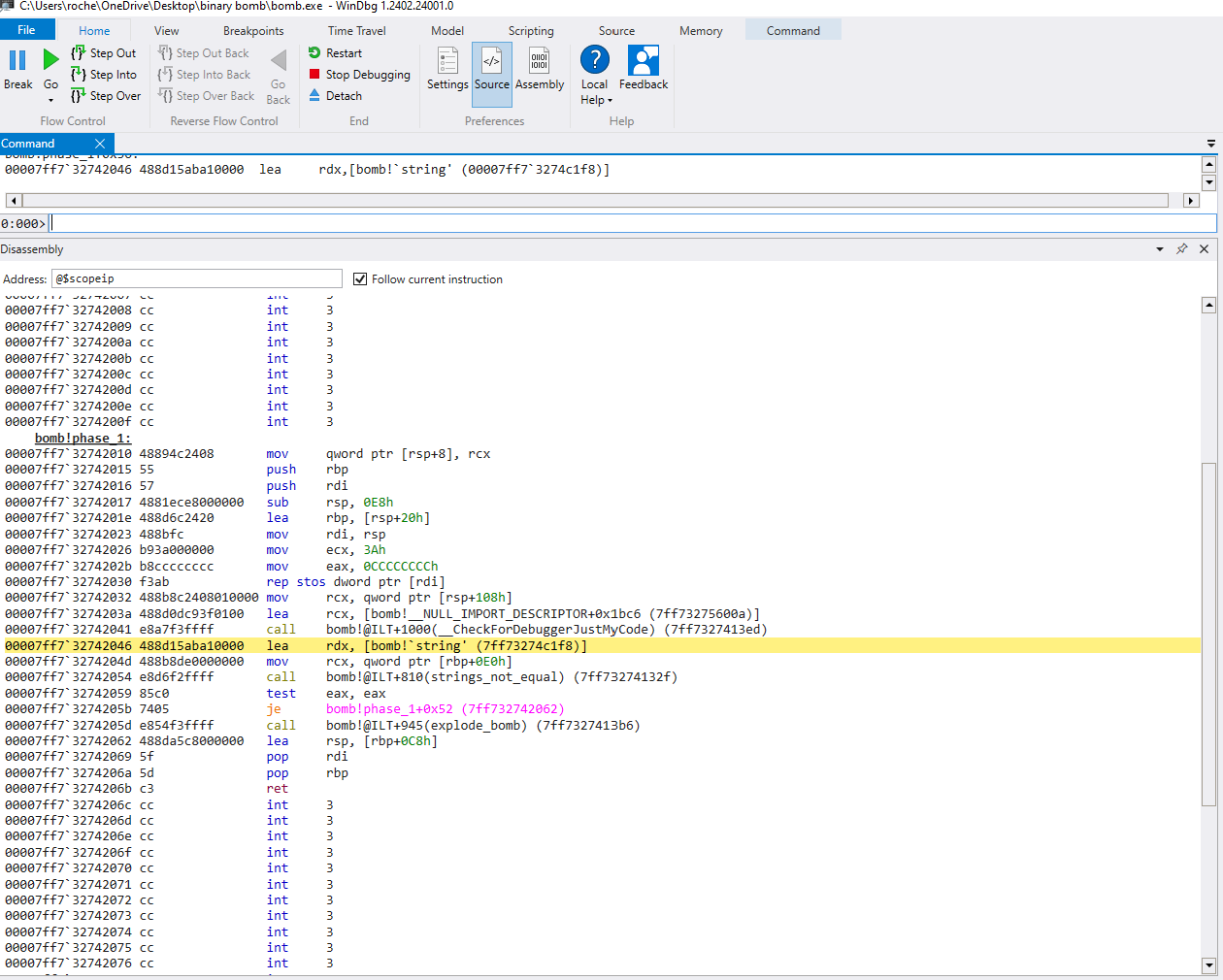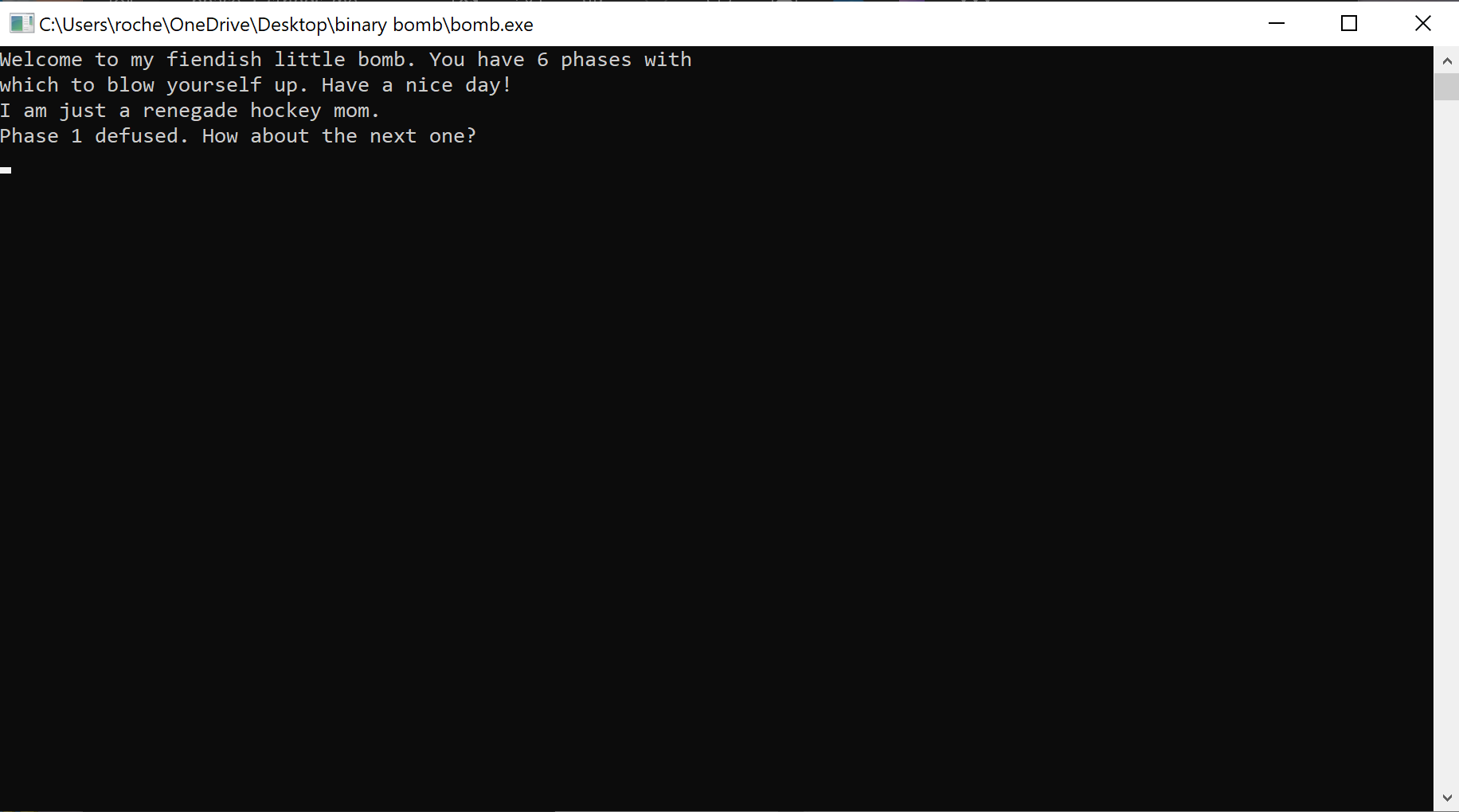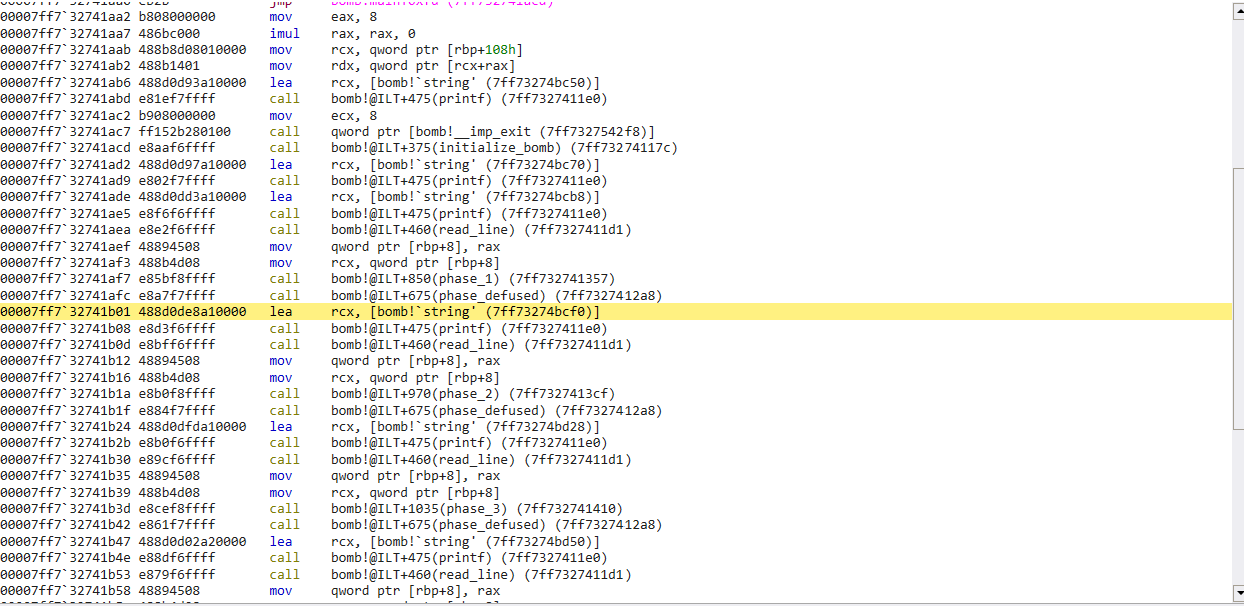CMU Binary Bomb Lab Phase 1
Introduction
Welcome to the beginning of the Binary Bomb lab walkthrough. I am going to give a comprehensive review of my strategy and through process when going through this challenge, but I am going to refrain from walking through every individual instruction.
Phase 1
When we run the binary bomb program, we are met with a message: “Welcome to my fiendish little bomb. You have 6 phases with which to blow yourself up. Have a nice day!” 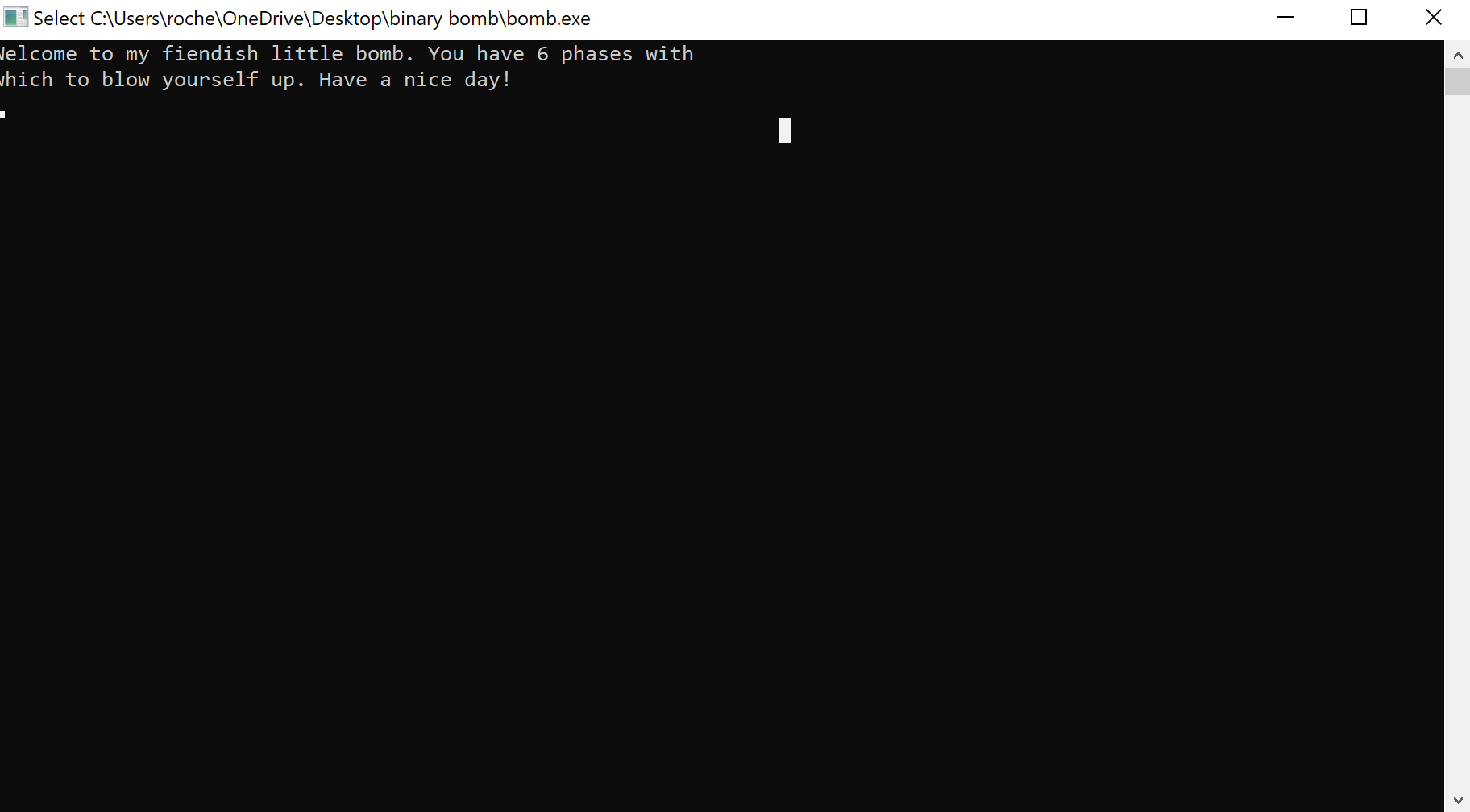 initial execution
initial execution
Well, let’s give it some input and see what happens. 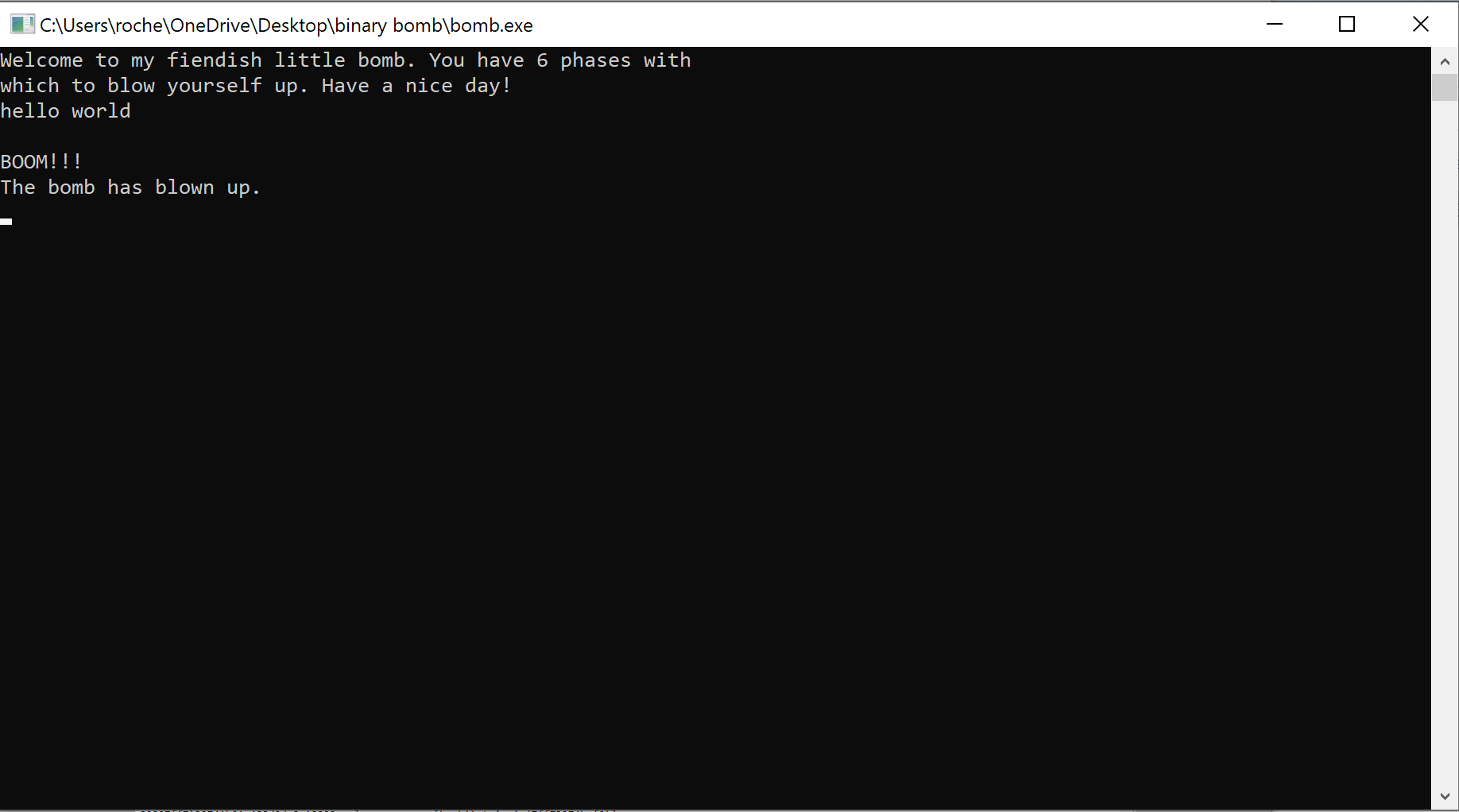 boom
boom
Our binary bomb has exploded. We need to investigate this and see what it is they want from us. Let’s do some dynamic analysis using WinDbg and take a look at the main function.
Initially this is alot to digest, but we can start to take step through the code while it executes to get an idea of what is happening. We see a few ‘lea’ instructions that seem to load our initial message pointers into registers, followed by a few calls to printf(). We can safely assume these are printing the welcome message we see. There is a call to read_line() which most likely taking the input we give. We also see a call to phase_1() followed by a call to phase_defused(). These two functions are of interest to us. Let’s take a closer look at phase_1()
Thankfully, this seems to be a pretty small function. We see some initial stack setup code (alignment, storing callee-store registers, etc) along with a few function calls
strings_not_equal()explode_bomb()
We’re gonna go out on a limb and guess that strings_not_equal() takes in two strings, compares each byte, and returns if they are equal. This function is followed by a test eax, eax which performs a bitwise ‘&’ operation on the register. The result is then used in je ..., which ultimately checks if the zero flag is set. If this flag is not set, the jump is not taken and the bomb explodes.
We can clearly see a lea rdx, 7ff73274c1f8, followed by a mov rcx, qword ptr[rbp+0E0h]. RCX and RDX are used for passing parameters in Windows compiler, so this is most likely our input and the expected string being loaded into memory. Let’s take a look at these two memory locations and see if this is correct 
There is the answer to phase_1 in plain text :0
“I am just a renegade hockey mom.” seems to be like the input phase 1 is expecting. Let’s give it a go
We can also see where we are in our main() function after successfully passing phase 1
On to phase 2!

